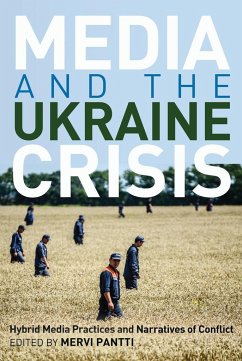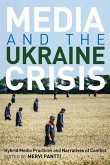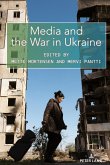How are media and communications transforming armed conflicts? How are conflicts made visible in the media in different national and transnational settings? How does the media serve as a means by which
various actors manage and communicate conflict?
These are some of the questions addressed in this book. Using a variety of disciplinary perspectives and analytical approaches, contributors discuss the complex, multi-level Ukraine conflict as it is imagined and enacted in and through various media. Covering a wide range of media forms and content, including television news, newspapers, PR campaigns, and social media content, they offer new, empirically grounded insight into the ways in which traditional mass media and new media forms are involved in narrating and shaping conflict.
This book is suitable for students of conflict and media courses in journalism, media and communication, politics, security, and Russian and Eastern European studies.
various actors manage and communicate conflict?
These are some of the questions addressed in this book. Using a variety of disciplinary perspectives and analytical approaches, contributors discuss the complex, multi-level Ukraine conflict as it is imagined and enacted in and through various media. Covering a wide range of media forms and content, including television news, newspapers, PR campaigns, and social media content, they offer new, empirically grounded insight into the ways in which traditional mass media and new media forms are involved in narrating and shaping conflict.
This book is suitable for students of conflict and media courses in journalism, media and communication, politics, security, and Russian and Eastern European studies.
«Media and the Ukraine Crisis, edited by Mervi Pantti of the University of Helsinki, brings together a variety of different viewpoints on the role of media in the conflict.»
(Ray Niekamp, Electronic News Vol. 11(2) 2017)
«As a Russian interdisciplinary scholar, whose work resonates with the content of the volume, I applaud to the attempt of the editor to give space and voice to different research traditions and to provoke further exploration of the mediatized warfare, hybrid media, and their mutual influence. At the height of the new Cold War, this book and the discussion it launched are very valuable and urgent.»
(Olga Lazitski, Journalism & Mass Communication Quarterly 1-3/2018)
(Ray Niekamp, Electronic News Vol. 11(2) 2017)
«As a Russian interdisciplinary scholar, whose work resonates with the content of the volume, I applaud to the attempt of the editor to give space and voice to different research traditions and to provoke further exploration of the mediatized warfare, hybrid media, and their mutual influence. At the height of the new Cold War, this book and the discussion it launched are very valuable and urgent.»
(Olga Lazitski, Journalism & Mass Communication Quarterly 1-3/2018)








